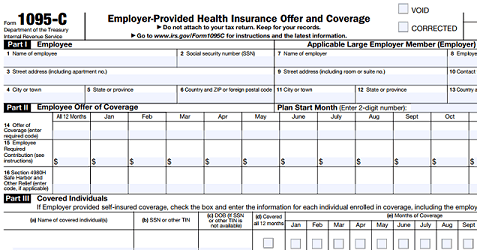ACA Reporting: Seasonal Workers
Tracking Seasonal Workers for ACA Reporting
Hello again,
This post is for Applicable Large Employers (ALEs) required to comply with the Affordable Care Act. We hope you find it helpful.
From the ACA Times:
“Determining whether or not your seasonal workers fall into the full-time equivalency category can be a difficult one.
In order to account for your seasonal workers, no matter what season it may be, it’s important to understand how the IRS treats them.
First and foremost, there are two types of ‘seasonal’ – ‘seasonal workers’ and ‘seasonal employees’ – that the IRS addresses in very different contexts. We’ll start with seasonal workers.
Seasonal Workers
Seasonal workers, in IRS terms, are used by the tax agency to determine whether or not an organization is an ALE. If an employer’s workforce exceeds 50 full-time employees, including full-time equivalent employees (employees who work 130 hours in a month), for 120 days or fewer during the preceding calendar year, and all of the employees in excess of 50 who were employed during that period of no more than 120 days were seasonal workers, the employer is not considered an ALE.
Note that a ‘seasonal worker’ is different from ‘seasonal employee.’ A ‘seasonal worker’ is one who performs labor or services on a seasonal basis as defined in certain Department of Labor Regulations, and include agricultural laborers and retail workers employed exclusively during holiday seasons.
Seasonal Employees
The IRS says that the term ‘seasonal employee’ applies to a full-time employee under the look-back measurement method. The look-back measurement method includes special rules that apply to new employees who are seasonal employees.
For this purpose, a seasonal employee means an employee who is hired into a position for which the customary annual employment is six months or less and for which the period of employment begins each calendar year in approximately the same part of the year, such as summer or winter. The IRS provides the ski instructor as an example of a seasonal employee.
Under the look-back measurement method, employees who average 130 or more hours on a monthly basis over a 12-month ‘measurement period’ will require an offer of coverage from their employer for the subsequent ‘stability period.’
Opting to use this method will allow employers to measure the seasonal employee’s hours over a 12-month period in which they are likely to average below 130 hours on a monthly basis. In non-educational organizations, every time the seasonal employees return, assuming their gap in service was more than 13 weeks, a new measurement period will begin.
The takeaway here is to make sure you monitor your seasonal employees’ hours.
Make the most of your summer to keep up with your ACA compliance activities to avoid a mad rush at the end of the year. Regularly monitor the hours and days worked for your seasonal employees and seasonal workers. Failure to do so may result in your organization receiving a Letter 226J.”
Learn more about how you can manage compliance year-round with Passport Software’s ACA Reporting Software. Or Contact Us – We are here to help.

